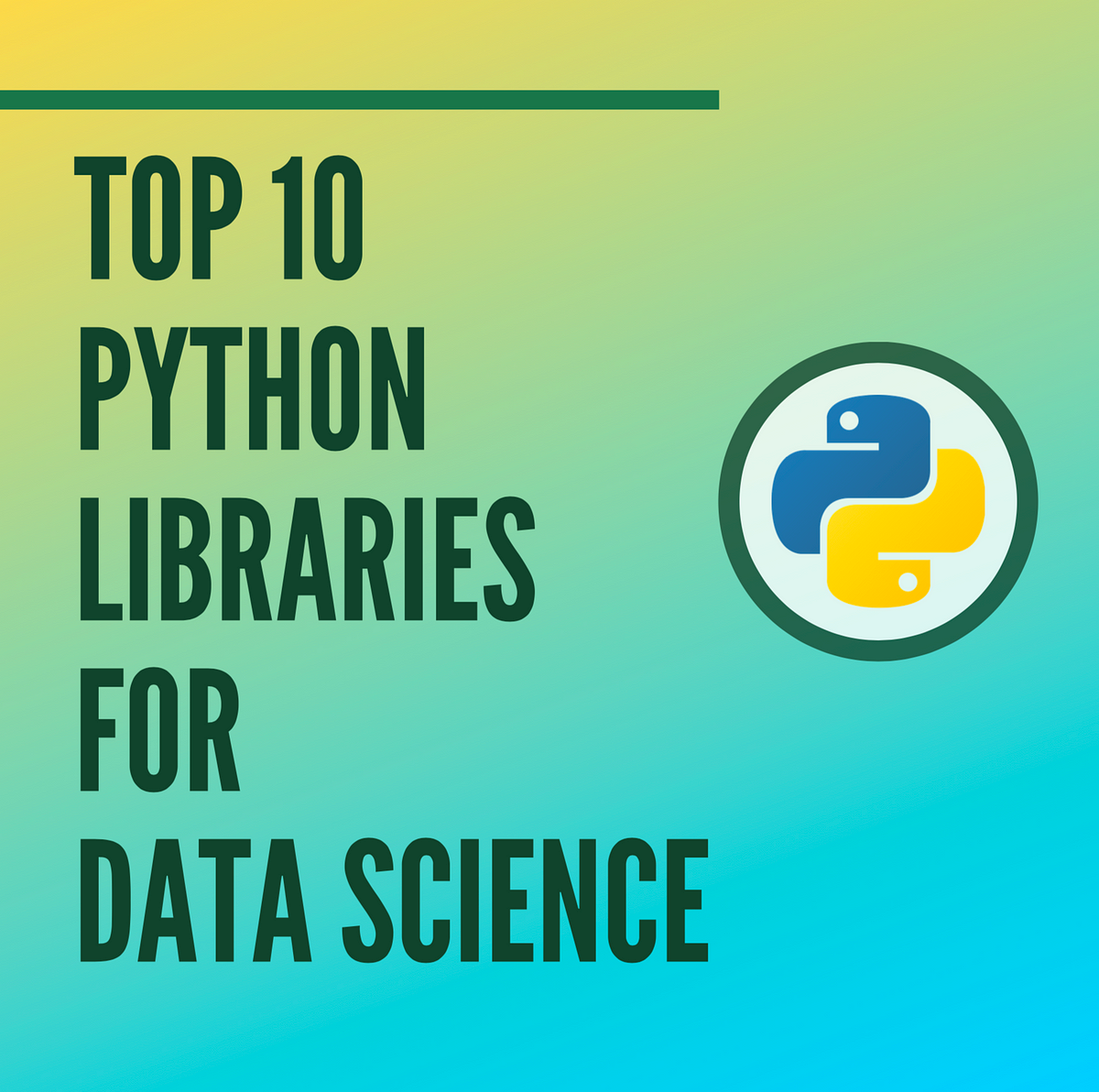Python has been a charmer for data scientists for a while now. The more I interact with resources, literature, courses, training, and people in Data Science, proficient knowledge of Python emerges as a good asset to have. Having said that, when I started flourishing my Python skills, I had a list of Python libraries I had to know about. A few moments later…
Python has been a charmer for data scientists for a while now.😀
People in Data Science definitely know about the Python libraries that can be used in Data Science but when asked in an interview to name them or state its function, we often fumble up or probably not remember more than 5 libraries (it happened with me :/)
Here today, I have curated a list of 10 Python libraries that helps in Data Science and its periphery, when to use them, what are its significant features and the advantages.
In this story, I have briefly outlined 10 most useful Python libraries for data scientists and engineers, based on my recent experience and explorations. Read the full story to know about 4 bonus libraries!
1. Pandas
Pandas is an open-source Python package that provides high-performance, easy-to-use data structures and data analysis tools for the labeled data in Python programming language. Pandas stand for _Python Data Analysis Library. _Who ever knew that?
When to use? Pandas is a perfect tool for data wrangling or munging. It is designed for quick and easy data manipulation, reading, aggregation, and visualization.
Pandas take data in a CSV or TSV file or a SQL database and create a Python object with rows and columns called a data frame. The data frame is very similar to a table in statistical software, say Excel or SPSS.
What can you do with Pandas?
- Indexing, manipulating, renaming, sorting, merging data frame
- Update, Add, Delete columns from a data frame
- Impute missing files, handle missing data or NANs
- Plot data with histogram or box plot
This makes Pandas a foundation library in learning Python for Data Science.
2. NumPy
One of the most fundamental packages in Python, NumPy is a general-purpose array-processing package. It provides high-performance multidimensional array objects and tools to work with the arrays. NumPy is an efficient container of generic multi-dimensional data.
NumPy’s main object is the homogeneous multidimensional array. It is a table of elements or numbers of the same datatype, indexed by a tuple of positive integers. In NumPy, dimensions are called _axes _andthe number of axes is called rank. NumPy’s array class is called ndarray aka array.
When to use? NumPy is used to process arrays that store values of the same datatype. NumPy facilitates math operations on arrays and their vectorization. This significantly enhances performance and speeds up the execution time correspondingly.
What can you do with NumPy?
- Basic array operations: add, multiply, slice, flatten, reshape, index arrays
- Advanced array operations: stack arrays, split into sections, broadcast arrays
- Work with DateTime or Linear Algebra
- Basic Slicing and Advanced Indexing in NumPy Python
#python #data-science #numpy #tensorflow #keras
